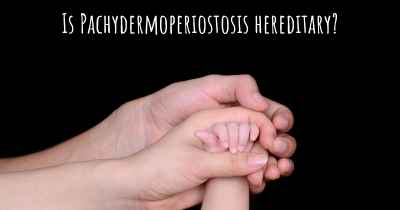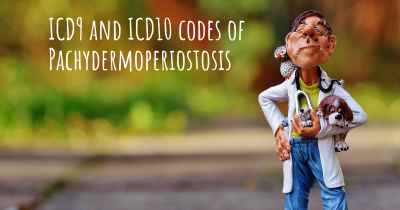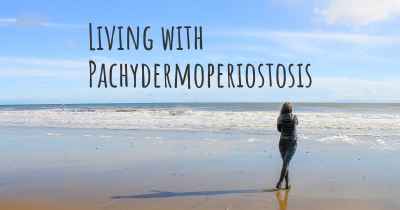What is the life expectancy of someone with Pachydermoperiostosis?
Life expectancy of people with Pachydermoperiostosis and recent progresses and researches in Pachydermoperiostosis

Pachydermoperiostosis, also known as primary hypertrophic osteoarthropathy, is a rare genetic disorder characterized by thickening of the skin, enlargement of the bones, and joint pain. The condition typically manifests during adolescence or early adulthood. While Pachydermoperiostosis can significantly impact an individual's quality of life, it is not considered life-threatening. The life expectancy of someone with Pachydermoperiostosis is generally not affected by the condition itself. However, it is important for individuals with this disorder to receive appropriate medical care and management of symptoms to ensure a good quality of life. Regular monitoring and treatment of associated complications, such as joint problems, can help improve overall well-being.
Pachydermoperiostosis, also known as primary hypertrophic osteoarthropathy, is a rare genetic disorder that affects the skin, bones, and joints. It is characterized by thickening of the skin, clubbing of the fingers and toes, and abnormal bone growth.
The life expectancy of individuals with Pachydermoperiostosis can vary depending on various factors such as the severity of the disease, the age of onset, and the presence of associated complications. While there is limited data available on the prognosis of this condition, it is generally considered to have a relatively benign course.
Most individuals with Pachydermoperiostosis have a normal life expectancy and can lead fulfilling lives with appropriate management and treatment. The condition typically manifests during adolescence or early adulthood and progresses slowly over time.
Although Pachydermoperiostosis is a chronic condition, it is not typically life-threatening on its own. However, complications can arise due to associated conditions such as arthritis, which may impact the overall health and quality of life of affected individuals.
Early diagnosis and appropriate management are crucial in minimizing the impact of Pachydermoperiostosis. Treatment options primarily focus on symptom relief and may include nonsteroidal anti-inflammatory drugs (NSAIDs) to manage pain and inflammation, physical therapy to improve joint mobility, and surgical interventions in severe cases.
Regular follow-up with healthcare professionals, including dermatologists, rheumatologists, and orthopedic specialists, is important to monitor disease progression and manage any complications that may arise.
In conclusion, while Pachydermoperiostosis is a chronic condition that can significantly affect the skin, bones, and joints, individuals with this disorder can generally expect to have a normal life expectancy with appropriate management and treatment. It is important for affected individuals to work closely with healthcare professionals to optimize their overall health and well-being.








